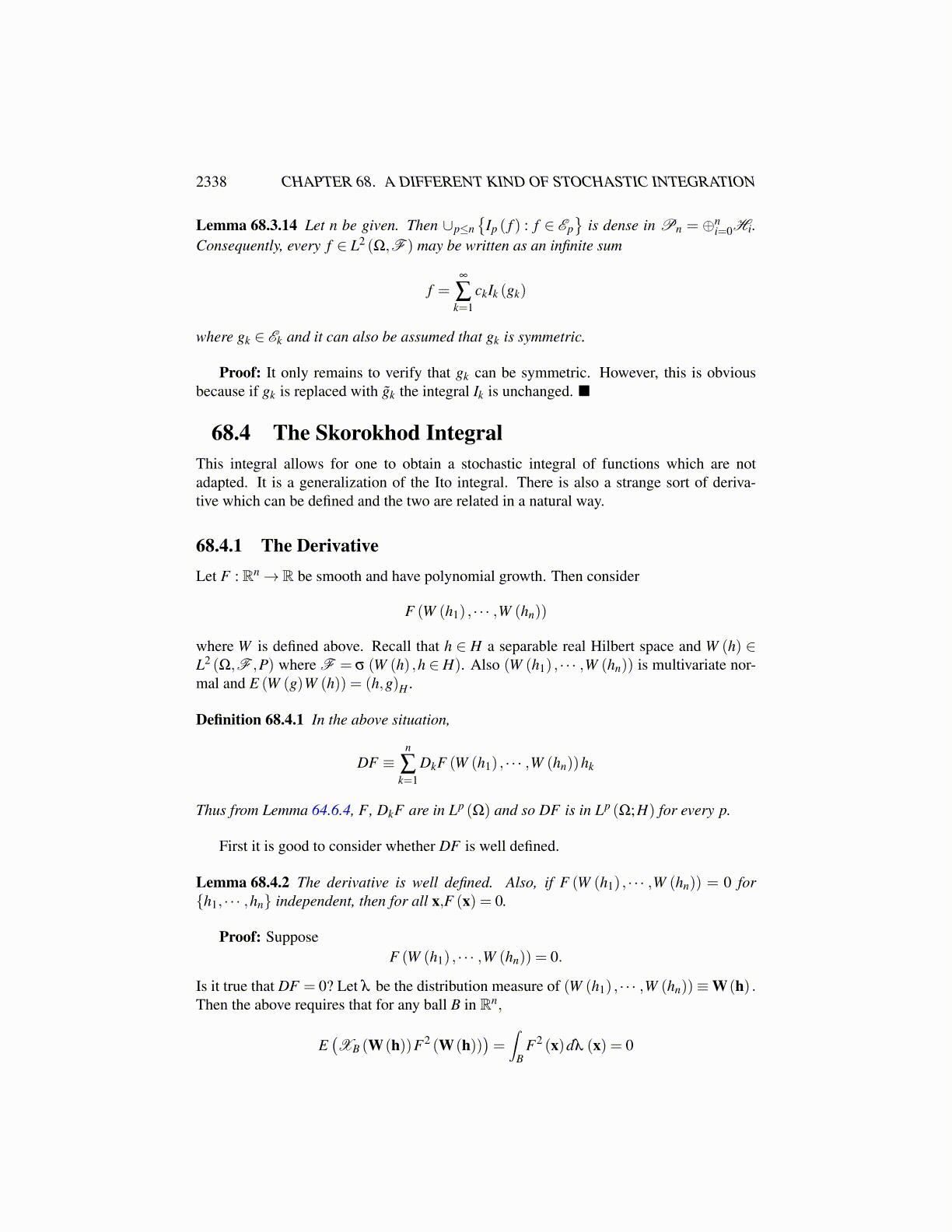
2338 CHAPTER 68. A DIFFERENT KIND OF STOCHASTIC INTEGRATION
which clearly converges to 0 as m→ ∞ provided that n≥ 2. In case n = 1, all you have todo is approximate XA from something in E1 and of course you just use XA.
Let f ,g ∈ En. Then from Lemma 68.3.9,
E((In ( f −g))2
)= n!
∥∥ f̃ − g̃∥∥2
L2(T n)
∥∥ f̃∥∥
L2(T n)=
(∫T· · ·∫
T
∣∣ f̃ (t)∣∣2 dt)1/2
=
∫T· · ·∫
T
∣∣∣∣∣ 1n! ∑
σ
f(tσ(1), · · · , tσ(n)
)∣∣∣∣∣2
dt
1/2
≤ 1n! ∑
σ
(∫T· · ·∫
T
∣∣ f (tσ(1), · · · , tσ(n))∣∣2 dt
)1/2
=1n! ∑
σ
∥ f∥L2(T n) = ∥ f∥L2(T n)
Therefore,
E((In ( f −g))2
)= n!
∥∥ f̃ − g̃∥∥2
L2(T n)≤ n!∥ f −g∥2
L2(T n) . (68.3.20)
The following theorem comes right away from this and Lemma 68.3.11.
Theorem 68.3.12 The integral In defined on En extends uniquely to an integral In definedon L2 (T n) . This integral satisfies
In ( f ) ∈ L2 (Ω)
AlsoE (In ( f ) In (g)) = n!
(f̃ , g̃)
L2(T n)
Proof: This follows right away from the density of En in L2 (T n) and the inequality68.3.20.
Obviously one wonders whether linear combinations ∑n cnIn ( fn) are dense in L2 (Ω) . Itlooks like the important thing to notice is that for f ∈ En, In ( f ) is a polynomial in W
(Aik
)≡
W(XAik
). Recall the corollary above, Corollary 68.2.4,
Corollary 68.3.13 Let P0n denote all polynomials of the form
p(W (h1) , · · · ,W (hk)) , degree of p≤ n, some h1, · · · ,hk
Also let Pn denote the closure in L2 (Ω,F ,P) of P0n . Then
Pn =⊕ni=0Hi